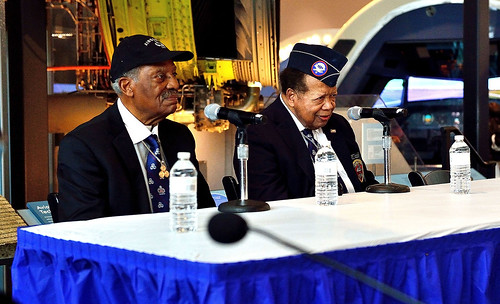
Most people don’t conjure up images of the U.S. Forest Service when they think of the Smithsonian’s Air and Space Museum. But every fire season the work of the Forest Service’s planes and helicopters, carrying smokejumpers, are vitally important to controlling the spread of wildland fires.
This is why the Smithsonian recently honored the legacy of 17 of some of the most lionized smokejumpers in Forest Service history. Known as the Triple Nickles, these smokejumpers were the first all-African American crew in American firefighting.
“It was World War II. You have to remember this was a time when segregation was still a part of everyday life. But 17 black men stood up to serve their country and become the first African-American paratrooper unit,” said Deidra McGee, a Forest Service employee who has been promoting the Triple Nickles since 1994. McGee met these valiant men that year in Washington, D.C. at the Ellipse near the White House, during a ceremony commemorating Smokey Bear’s 50th birthday.
The men wanted to join the fight in Europe during World War II, but their dreams were shattered when military leaders in America and Europe feared racial tensions would disrupt war time operations. At about the same time, the Forest Service asked the military for help to minimize damage caused by balloon bombs launched by the Japanese across the Pacific Ocean with the intent to start forest fires in the western U.S..
“In the end, few of the incendiary devices reached U.S. soil, but the Triple Nickles were instrumental in helping the Forest Service fight naturally-caused fires,” said McGee. “They became history’s first military smokejumpers who answered 36 fire calls and made more than 1,200 jumps that summer of 1945.”
Sadly, the event at the Smithsonian saw none of the original Triple Nickles as only platoon member Clarence Beavers remains alive and he is physically unable to leave his bed for any extended period of time. Instead several others, with close ties to the original 17, attended to represent their comrades.



